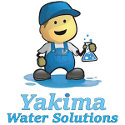pH filter installation & maintenance by Problem Water Specialists
The telltale signs of pH problems
The corrosive nature of acidic water causes metal ions such as iron, manganese, copper, lead and zinc to leach into the water, causing elevated levels of toxic metals in your water. Signs of acid water are corrosion of fixtures, blue staining (from copper pipes) or rust staining (from iron pipes). Acidic water can also cause pinhole leaks and pipe failure over time. It may also cause aesthetic problems, such as a metallic or sour taste.
How we solve pH problems
A neutralizing filter is used if drinking water is acidic (low pH). It is a simple treatment device that raises the pH of water by adding a neutralizing material.
Neutralizing filters are point-of-entry devices that raise water pH to neutral levels (around 7) which reduces or eliminates plumbing corrosion problems. Untreated water flows through the filter, which is filled with calcium carbonate (limestone) or a synthetic magnesium oxide medium. This material dissolves in the water and raises its pH level.
pH Filter Maintenance
All treatment systems require regular maintenance. The material used in a neutralizing filter needs to be refilled and the filter needs to be backwashed regularly. Installing a cartridge filter prior to the neutralizing filter will remove solid particles from the water and can help to prolong the life of the neutralizing filter.
The pH Scale
pH is a scale used to measure levels of acidity or alkalinity in a liquid. Measuring pH in water levels does not measure the quantity of acid or alkali, but rather a measure of the relationship of the acid to the alkali.
The pH scale ranges between 0 and 14, as reflected in this scale.

